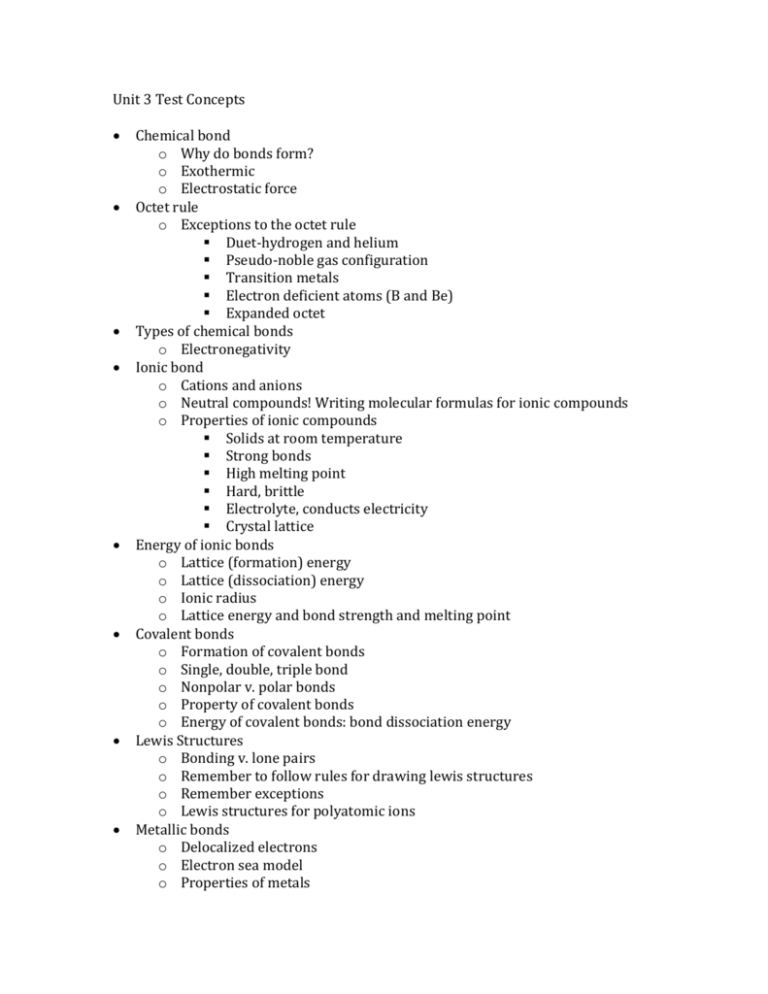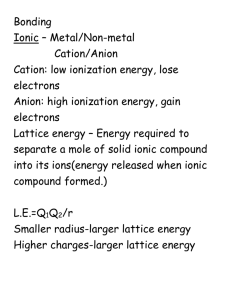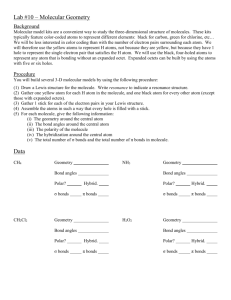Unit 3 Test Concepts Chemical bond Why do bonds form
advertisement

Unit 3 Test Concepts Chemical bond o Why do bonds form? o Exothermic o Electrostatic force Octet rule o Exceptions to the octet rule Duet-hydrogen and helium Pseudo-noble gas configuration Transition metals Electron deficient atoms (B and Be) Expanded octet Types of chemical bonds o Electronegativity Ionic bond o Cations and anions o Neutral compounds! Writing molecular formulas for ionic compounds o Properties of ionic compounds Solids at room temperature Strong bonds High melting point Hard, brittle Electrolyte, conducts electricity Crystal lattice Energy of ionic bonds o Lattice (formation) energy o Lattice (dissociation) energy o Ionic radius o Lattice energy and bond strength and melting point Covalent bonds o Formation of covalent bonds o Single, double, triple bond o Nonpolar v. polar bonds o Property of covalent bonds o Energy of covalent bonds: bond dissociation energy Lewis Structures o Bonding v. lone pairs o Remember to follow rules for drawing lewis structures o Remember exceptions o Lewis structures for polyatomic ions Metallic bonds o Delocalized electrons o Electron sea model o Properties of metals Be able to explain properties in terms of metallic bond Melting and boiling point Malleable and ductile Conductors of heat and electricity Metallic bond strength Nomenclature o Type I, II, and III naming 3-D shape of molecules: VSEPR o Be able to predict 3-D shape of molecules. o Memorize shapes, names of shapes, and bond angles through 4 electron pairs around the central atom. Polar bonds and polar molecules o Be able to identify whether a bond will be polar or nonpolar o Be able to identify whether a molecule will be polar or nonpolar o Dipole moment









